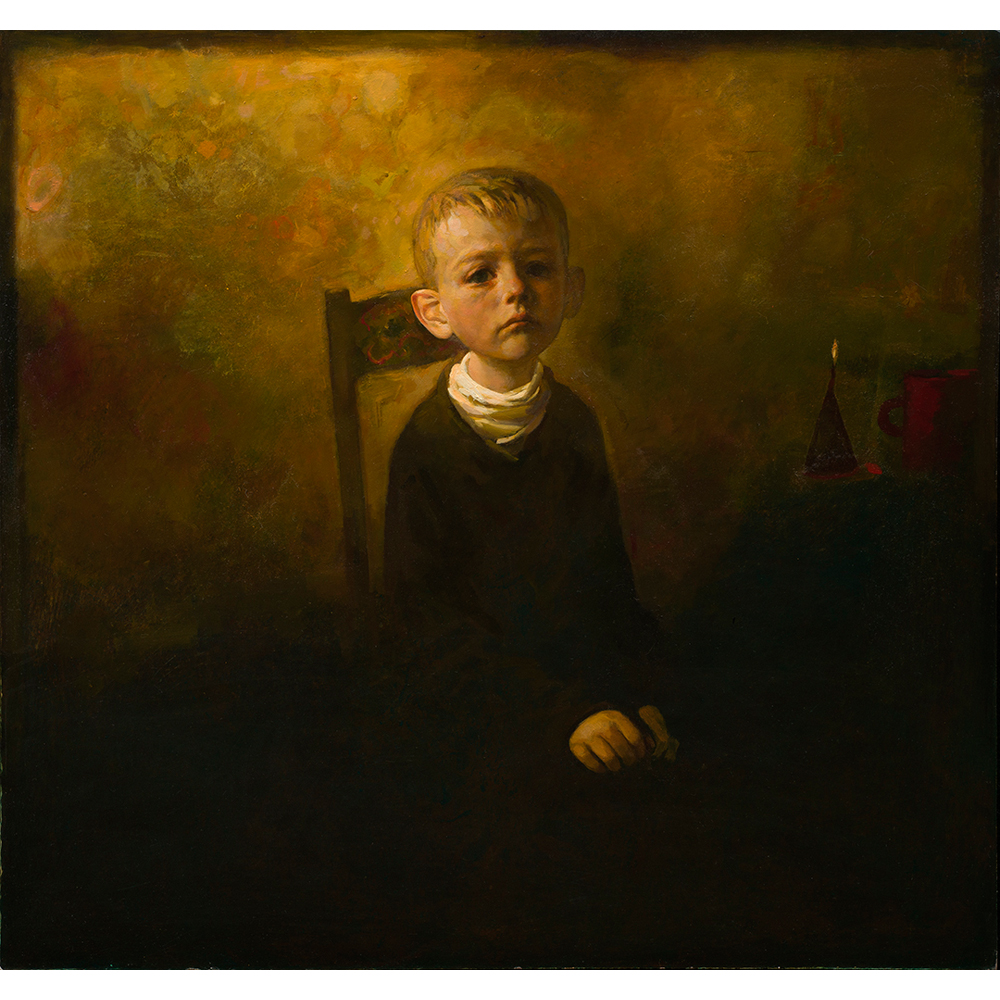Artwork Description
Igor Melnikov – Boy Thinking
Dimensions: 36.5 x 37.5″ framed / 32 x 34″ unframed
Year: 2017
Medium: oil on panel
The title of this work hints at the layers of psychological depth that abound within its frame: the painting’s subject, a young boy, peers meditatively out of the frame, inviting the viewer into his psychological landscape. The boy’s chair hovers within a shadowy, abstracted backdrop, creating a sense of physical surreality about the scene and prioritizing the subject’s form above those of his surroundings. In so doing, Melnikov focuses entirely on the ruminations of his subject, emphasizing the particular psychology of childhood.
Russian born artist, Igor Melnikov, upends traditional associations with portraiture through his haunting and intrinsically psychological paintings of emotionally ambiguous children and within his subtle natural explorations. Rather than focusing on the individual identity of those within his works, Melnikov instead looks to viewers as dynamic participants in the interpretation of his paintings, allowing them to determine whether the children might burst into tears or laughter, based on personal experience, thought, and upbringing. Melnikov is fascinated with the simultaneity of happiness and suffering, which he believes function as an expression of the ‘complexity of the human personality’ and exist as a component of the ‘meaning of being’. Melnikov’s paintings are collage-like, yet not in the traditional, material sense of the process—instead layering his own psychological explorations onto his attempted understandings of the human condition and expression. While his muted color palettes might at first appear to be reductive, they instead focus viewers’ attention on the figures within the work and encourage slow and thorough readings of the detailing that remains visually available. While people and the human condition remain the primary subjects within his paintings, Melnikov also expresses an artistic concern for the natural world, whether expressed in landscape surroundings or in its more material and familiar manifestations, seen in the figure’s clothing and simple possessions.
by Keira Seidenberg, Art History/Gender Studies student, McGill University

